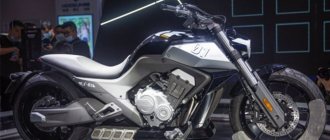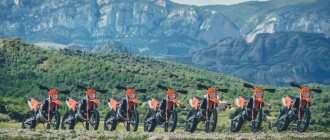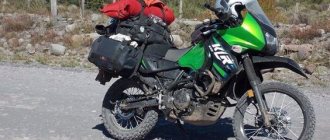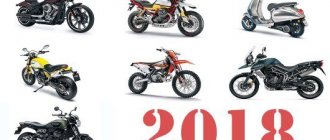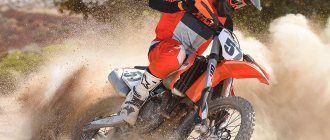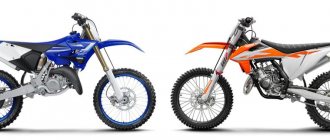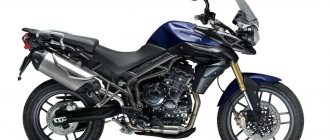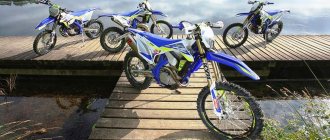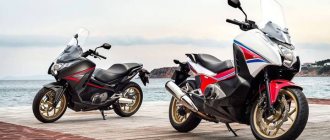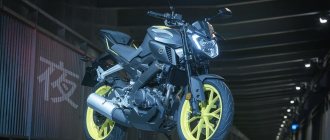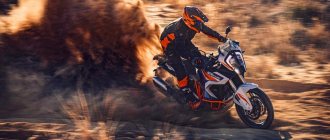Taking inspiration from the American-built motorcycles of yesteryear, cruisers have long been the most popular and best-selling motorcycle style in North America, the world's largest motorcycle market. In an effort to meet the needs of cruiser-oriented customers in the United States and Canada, major manufacturers have poured enormous amounts of resources into the development, production and marketing of their respective lines of bikes.
And while this has led to a buyer's market being flooded with increasingly capable and affordable two-wheeled products, the sheer number of makes and models available can make shopping in this segment quite challenging. So, with that in mind, the list has been compiled from models that have been produced over the past few years. We’ll also explore what to look for and consider when shopping, and briefly dive into the history of the cruiser class, what qualities and factors make them unique.
History of Cruiser motorcycles
With the advent of the motorcycle, the industry grew rapidly, giving way to more advanced and high-performance two-wheeled models. Major motorcycle genres developed vigorously from the 1940s to the 1960s in different regions, establishing their own styles and interpretations of motorcycles. Including the USA, with its golden era of big V-Twin engines, thanks to manufacturers such as Crocker, Indian, Excelsior and Harley-Davidson.
US-based motorcycle companies not only used these designs in the mid-1900s, but also stated that they would serve as the visual inspiration for the lion's share of production motorcycles that were subsequently released - a trend that continues to this day. Along with the bike's relaxed riding position, ample torque and ease of touring, their quintessentially American aesthetic plays a big role in setting them apart from other styles of motorcycles and is a major selling point for the biker crowds. That's not to say that foreign manufacturers haven't tried to emulate the style or put a unique spin on it, although in general, cruisers are American at heart.
Indian Challenger
Chinese models 600 cc
Let’s say you need a bike exclusively for the city, and you don’t plan to show “character” on a country road, or even go outside the city. In this case, you can take a look at the 600 cc motorcycles produced in China.
And here the choice will be very interesting and unusual, since there are no original Chinese models of such power. There are only two Italian options, which were purchased by Chinese concerns. The result was modern design bikes with 80 hp. One has a 4-cylinder engine, the other has only 2. The maximum speed does not exceed 180 km/h, which is ideal for the city. However, the handling of such motorcycles at maximum permissible speeds leaves much to be desired. However, girls can easily cope with them at medium speed.
However, in any case, the choice of motorcycle should depend not on the brand, model and prestige of the company that produces the bikes, but on the qualities of the driver himself. The classic, sports or road version requires some experience and a solid assessment of your own capabilities.
Cruisers with V-Twin engine
In the early days of the American motorcycle industry, manufacturers primarily used relatively primitive air-cooled single-cylinder powerplants, although in 1906 Indian produced the first American V-Twin model with a 39ci 42° tire. Harley's first production V-Twin model was released in 1909. In subsequent decades, various American brands, including Indian, experimented with other engine configurations, although the 1907 V-Twin became the archetype for American motorcycles.
Today, V-Twin engines are synonymous with American-made cruiser motorcycles, boasting a distinctive look that serves as the embellishment and centerpiece of virtually every production cruiser. And they offer an easily recognizable and distinct deep, throaty and rumbly exhaust sound. What's more, these large-displacement V-twin engines play a key role in the overall riding experience of American cruisers, with their broad, low-end grunt and firm stance. In recent years, foreign motorcycle companies have introduced cruiser models with other engine configurations, although even most of these are just variations of the longitudinally mounted V-Twin, such as the L-Twin-powered Ducati Diavel (and XDiavel) and the transversely-mounted V-Twin-powered Moto Guzzi .
Cruiser classes
While every model on this list is classified as a cruiser, there are actually several different styles of motorcycles in this segment. To shed some light on these differences, we've broken down the cruiser class into five main categories, each of which we'll briefly touch on immediately below.
Entry Level: As the name of this subgenre suggests, entry-level models are more affordable and more beginner-friendly. At least by American cruiser standards, these models have smaller engines that are more convenient for novice racers.
Tourer: Touring bikes aren't always ideal for city riding or commuting, but they're perfect for chewing up the miles on the open road. Touring models with powerful engines, long wheelbases, good riding position and high stability due to their enormous weight are ideal for long trips.
Bagger: Also called "chesters," baggers are an easily recognizable subgenre of cruisers with large fairings, hard luggage, and spacious passenger seating. Similar to touring models, baggers are also incredibly suitable for long-distance travel. With plenty of amenities such as heated grips, cruise control and on-board infotainment systems, stereo and GPS navigation systems.
Hyper-Cruiser: Hyper-Cruiser models are a style of cruising motorcycle that have been designed from the ground up to provide noticeably better performance than a regular cruiser. These high-performance offerings offer greater lean angle, better acceleration and cornering, and often feature components typically found on sport and superbike models.
Electric: Even though there are only a few production models at the moment, electric cruisers are almost certainly the next big trend in the cruiser world. While they lack the powerful rumble and exhaust note of a traditional petrol V-Twin, the electric powertrains still maintain the same ample low-end torque. The new EV cruiser class also tends to include the most advanced technology of any subgenre on this list.
Triumph Rocket 3
Indian Vintage Dark Horse
Indian is fueling interest in itself every year. Prices, however, are almost the same as Grandfather Harley’s, or even higher. The original Indian Vintage Dark Horse model starts at 2,699,000 rubles.
The motorcycle is powered by a Thunderstroke 116 V-twin engine with a capacity of 1890 cc. cm produces 92 hp. One filly less than Harley-Davidson.
For an amount of more than two and a half million rubles, users receive a basic package with Touring suspension with rear shock absorbers, an anti-lock braking system, cruise control, contactless ignition, and also saddlebags made of genuine leather with fringe.
Starting with a small volume
You wouldn't want to learn to drive behind the wheel of a Ford F-250 Super Duty or any other massive pickup truck, and by the same token, you almost certainly shouldn't start your career in a full-size cruiser. Even with entry-level models with roughly liter-sized engines and curb weights exceeding 200kg, cruisers are simply not very suitable for beginners. With tons of power and half the weight of a Fiat 500, cruisers can be extremely unforgiving and difficult to handle, making them perhaps one of, if not the worst choice for inexperienced racers.
Starting on a cruiser that is too big and/or powerful is not only dangerous, it will hinder your growth as a rider and make the lion's share of your experience in the saddle extremely nerve-wracking. If you're still set on starting your two-wheeled career on a cruiser, the good news is that there are plenty of beginner-friendly cruiser models on the market today. These motorcycles have smaller engines and thinner curb weights, while maintaining the appearance of traditional cruisers. Once you develop your technique and riding skills, you can always upgrade to a larger cruiser in the future.
Honda CMX1100 REBEL
Who would have thought that the cruiser would be the brother of the Africa Twin, but the in-line eight-valve “two” Rebel CMX1100 makes these two models related to each other. The engine capacity of 1084 cm3 releases 87 horsepower.
The most interesting thing about this motorcycle is the semi-automatic gearbox, which works thanks to the DCT (Honda Dual Clutch Transmission) installation option. Moreover, if you don’t like DCT, then you can stick with a regular 6-speed manual.
The driver will have access to 4 engine operating modes, a set of electronic assistants, LED technology, a digital instrument panel, a glove compartment and a USB connector.
The question of the price in Russia remains open, but according to first estimates, the price tag tends to a million rubles.
What to look for when buying a cruiser
Now that you're familiar with the different subgenres available and a little history about cruisers, let's dive into the five most important aspects to consider when purchasing a motorcycle in this class (in order of importance).
Intended Use: No matter what kind of motorcycle you're looking for, your search for a new snowmobile should always be based on what you plan to use, and that's no less true for cruiser bikes. If you plan to use it for your daily commute, you'll want something more nimble and maneuverable; for example, if you're going to be doing long hikes in the saddle, you'll probably want to consider an option with a rack.
Style: The enormous popularity of the cruise segment has led to the emergence of a variety of styles within the class. Some cruisers take a more vintage approach, drawing aesthetic influences from retro models from the mid-1900s, while other models take a more modern approach, with a more aggressive character and an overall more modern design language. It's worth checking out all the different stylistic options before making a purchasing decision.
Moto Guzzi MGX-21
Engine Power: One of the most defining elements of a cruiser is its engine and its torque and horsepower. Not only will you want to consider whether the motor size and power are suitable for your intended use, but also whether you are capable of operating the particular motor correctly and safely. Additionally, engine mechanics and technology can vary greatly even without today's market, with some companies using much more advanced powertrains than others.
Weight: Most cruisers weigh over half a ton, making them extremely difficult to maneuver at lower speeds, especially for the inexperienced and/or uninitiated. Since these are the heaviest motorcycles available (not counting three-wheelers), it is extremely important to consider the weight of a cruiser when purchasing.
Brands: Some brands have developed cult statuses and followings where you're not just buying a motorcycle, you're buying a brand, an identity, a lifestyle and an experience. Since many modern cruiser models are inspired by existing vintage bikes, the history of cruising is considered very important. Different manufacturers also have different dealer networks and support, as well as varying degrees of access to spare parts. Finally, it's always worth reading up on a particular company's history and reputation on aspects such as reliability as well as recommended service intervals.
Buy accessories, equipment, spare parts:
Go to the store
Yamaha V-Star 250
The affordable Yamaha V-Star 250 is an incredibly unique entry-level motorcycle with an unmistakably traditional look and a true V-Twin 249cc engine producing 21bhp. With a seat height of 27 inches and a curb weight of less than 150 kg, this quarter-liter cruiser is great for first-time drivers, and with a top speed of 85 mph and efficient fuel economy, the V-Star 250 is fully capable of handling two-up or touring trips.
Kawasaki Vulcan S
The Vulcan S is a decidedly sporty midsize cruiser based on the Japanese brand's popular and extremely utilitarian Ninja 650 platform. So the ABS-equipped Vulcan S gets a sportbike frame and the same fan-favorite 650cc twin-cylinder engine. cm and 60.4 hp, the same as the Ninja, although it uses a noticeably different position. Also of note is the Vulcan S's adjustable seat and movable foot controls, which allow for a customized rider triangle no matter who sits in the saddle.
Indian Scout Bobber Sixty
The new king of entry-level cruising, the Indian Scout Bobber Sixty offers great performance and a big bike. Built around a lightweight die-cast aluminum frame, the Indian SBS is powered by a state-of-the-art 1000cc engine. cm and 78 hp fuel-injected and liquid-cooled with blacked-out housings, which is connected to a five-speed gearbox. The bike also takes a lot of visual cues from the custom scene, such as the chopped rear fender, rocker seat, dual shotgun barrels and side license plate holder. The base model without ABS also comes in a black-on-black livery.
Honda Rebel 1100
The Honda Rebel has been the go-to model for aspiring cruiser enthusiasts since the debut of the first generation 250cc model in 1985, and more recently, with the launch of the current generation Rebel 300 and 500, Honda has finally released a full-size version of the bike. Engine 1084 cc. and 86 hp. with liquid cooling. The Rebel 1100 has a modern cruising look with knee notches, a fully open frame, a round LED headlight, and a float-style seat and rear fender.
Triumph Bonneville Bobber
While the Bonnie Bobber isn't usually what comes to mind when discussing cruisers, it does have a tractor-style saddle with an ultra-low seat height, a low and reclined riding position, and torque from a twin-cylinder engine. Triumph's best-selling model, this 227kg bike is based on the 1200cc Bonneville platform. cm and power 77 hp. from Hinckley and offers the feel and look of a home build without losing the factory fit and finish or manufacturer's warranty.
Calculate and compare MTPL for a motorcycle:
Go to website
BMW R18
The R18, powered by the largest 1802 cc flat-twin engine. cm and 91 hp, the most ever produced by BMW Motorrad. Featuring a newly launched interpretation of the 345kg cruiser, the latest addition to the Bavarian brand's heritage range is visually inspired by WWII-era BMW models, particularly the 1936 R5. The retro forks, wide exhaust pipes and '30s-style bodywork adorned with black livery with white pinstripes are all a clear nod to the R5. BMW also offers a huge selection of parts and accessories to personalize your Bavarian behemoth.
Yamaha VMAX
First released in 1985, the Yamaha VMAX was one of the first hyper-cruiser motorcycles. Featuring an angular and modern conventional cruiser body design that boasts hints of an unabashed street fighter. The VMAX stands apart from almost every other motorcycle on the market with its pronounced air intakes, instruments partially mounted on top of the tank. The V4 1.6L engine produces 100 hp, which is kept in check by beefy 52mm dual Brembo front discs with six-cylinder calipers.
Harley-Davidson Low Rider S
The Low Rider S is a modern classic tourer that's draped in West Coast style with headlight fairings, flat crossbars and mid-mounted foot controls. The bike's reduced rake angle, inverted front and monoshock rear suspension, dual front disc system with ABS included, give the Low Rider S above-average performance in its class. The bike is powered by the latest version of the Harley-Davidson Milwaukee-Eight 114 V-Twin 1753 cc engine producing 93 hp. The best choice is in an all-black or crimson color.
Ducati Diavel 1260
While the XDiavel falls more into the cruiser category of all the bikes in Ducati's line-up, the Italian manufacturer's regular Diavel model is undoubtedly the better of the two and also arguably the more aesthetically pleasing of the pair. Angled air intakes, higher sports seats and aged radiator caps with vertical LED lighting. Powered by a Testastretta DVT 1262cc engine producing 157 hp, the Diavel 1260 is also offered in the more premium S-spec trim, equipped with Ohlins suspension, as well as the top-of-the-line Diavel 1260 Lamborghini version, produced in limited edition as a result of a collaboration with the supercar manufacturer.
Harley-Davidson Road Glide
Consistently one of Harley-Davidson's best-selling models—and one of the best-selling cruisers to date—the Black and Orange's Road Glide has been an icon since its debut in 1998, when it replaced the Tour Glide. Easily recognized by the distinctive shark-nose fairing on the frame, the Road Glide is loaded with amenities and technology that make it ideal for long-distance adventures. The GTS's Box infotainment and stereo system with dual 5.25-inch speakers plus a standard hard-mounted trunk round out the Road Glide.
Moto Guzzi MGX-21
Moto Guzzi's MGX-21, also known as the "Flying Fortress", is a high-end Italian-made bagger with a sleek and modern design aesthetic. Large amounts of exposed carbon fiber adorn the tank, fenders, trunk, and even the front wheel is made from an ultra-light material. This big touring bike also boasts plenty of modern technology and offers a wildly smooth and controlled ride, making it the bike of choice for those looking to cover long distances on the open road. The engine is a transverse V-shaped two-cylinder with air and oil cooling. Volume 1380 cc. cm and power 97 hp.
Triumph Rocket 3
The Triumph Rocket 3 currently has the distinction of being the largest production motorcycle model in the world, with an absolutely enormous 2.5-litre three-cylinder engine producing 165bhp. The Rocket 3's top speed is 225km/h - which is still nothing to complain about - it reaches its top speed ridiculously quickly, with a 0-100km/h sprint of just 2.73 seconds, making it the fastest production cruiser currently available . And as you'd expect from a $22,500 Triumph model, the Rocket 3 comes loaded with tech, including a built-in navigation system with turn-by-turn directions from Google, multiple riding modes, and the ability to control your GoPro via handlebar controls.
Indian Challenger
Indian's formidable answer to Harley's ultra-popular Road Glide, the Challenger is a more refined and sophisticated motorcycle with more technology, better performance and, in our opinion, a nicer aesthetic design than its direct Milwaukee-built competitor. The Challenger is not only lighter than the Road Glide, but also has a slightly larger 1,768cc V-Twin engine. cm, and also produces noticeably more torque and power of 122 hp. The Challenger is made even more attractive with a full complement of LED lighting, radial-mount Brembo racing brakes, an electronically adjustable windshield, a powerful 100-watt audio system with active equalizer, and weather-sealed storage space.
Evoke 6061
Taking its name from the aerospace-grade 6061 aluminum from which its frame is made, this electric cruiser model undoubtedly pushes the boundaries of the two-wheeled electric bike sector with a top speed of over 225 km per hour and a maximum power output of 168 hp. and more than 270 Nm of torque. For reference, that's almost half the torque of BMW's latest M3, even though the 6061 tips the scales at less than a tenth of the BMW's curb weight. Equally impressive is the eBike's Beijing-made battery, which offers 466 km of battery life and can be fully charged in an industry-leading 15 minutes. Cost in China: $24,999.
Arch KRGT-1
The KRGT-1 is the first offering from the Southern California-based boutique motorcycle brand, created by Keanu Reeves and Gard Hollinger. This is an ultra-exclusive, low-cost interpretation of the hyper-cruiser. The motorcycle is based on 2032 cc. cm S&S V-Twin, rated at 122 hp, fed through a unique downdraft breathing system built into the hypercruiser's unibody chassis. The custom-built KRGT-1 is equipped with the best running gear money can buy, including BST carbon wheels, dual ISR six-piece radial monobloc calipers, and an in-house built carbon superbike muffler. Premium suspension developed by Arch in collaboration with Ohlins, plus Rizoma parts and accessories.
Triumph Rocket III 0-100 km/h – 2.8 sec
The family of “missiles” with the Roman troika consists of five vehicles. The name Rocket III comes from a motorcycle manufactured by the British industrial group The Birmingham Small Arms Company Limited, which produces weapons among others, and is a reference to the Rocket 3 from 1968, also produced under the name Triumph Trident.
Triumph Rocket III. Photo: Triumph
The Triumph Rocket III motorcycle project began in 1998 under the leadership of Ross Clifford. The main designer of the motorcycle was John Mockett, who designed the Hesketh V1000, Triumph Tiger and Triumph Bonneville models. Mockett collaborated with David Strid, Gareth Davis and Rod Scivier in the development of the three-cylinder in-line engine.
Big as a mountain, the Rocket III has a three-cylinder engine with a displacement of more than two liters (2294 cm3). The powerful bike has a dry weight of 334 kg and a length of exactly 2.5 meters. In earlier versions, Rocket III even weighed about 370 kg.
To be able to move such a mass, the engine develops 148 hp. at 5750 rpm and a torque of 200 Nm at 2500 rpm, allowing you to reach 100 km/h in just 3 seconds! The drive is moved by a cardan shaft.
Triumph-Rocket-III
